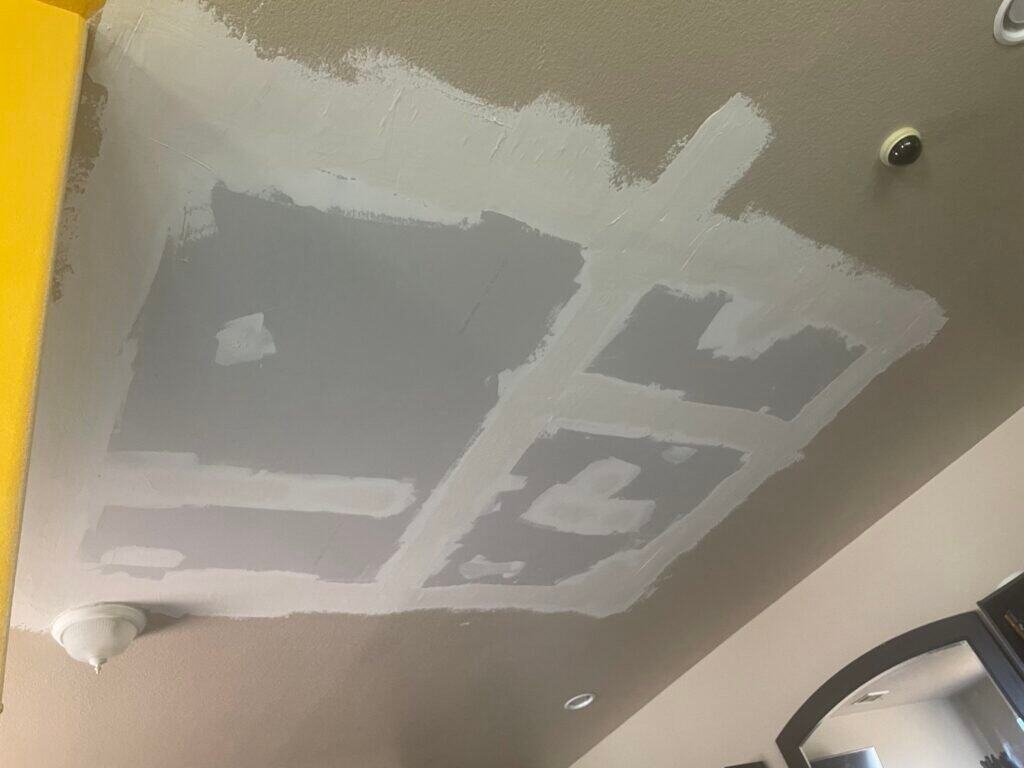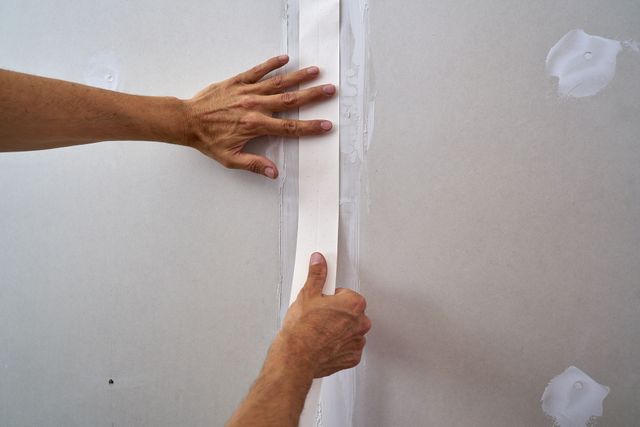Partner with professional drywall contractors to achieve flawless results in every Interior Painting project.
Vital Tips for Effective Drywall Repair Work and Installment Strategies
Efficient drywall repair and installment calls for a careful approach. Recognizing the sorts of drywall and having the right devices is important. Correct techniques and exact dimensions can considerably affect the result. Several ignore important steps like taping and fining sand, which can make or damage the last appearance. As tasks progress, usual challenges may emerge that call for interest. Discovering these ideas can cause a much more effective and polished finish.
Recognizing Different Kinds of Drywall
Recognizing the numerous types of drywall is necessary for any type of effective repair work or setup task. Drywall, generally called gypsum board, is available in several selections customized for particular applications. Standard drywall is one of the most extensively made use of type, ideal for basic interior walls and ceilings. Moisture-resistant drywall, typically green in shade, is developed for locations prone to moisture, such as shower rooms and kitchens. Fire-resistant drywall, normally tinted pink or purple, is engineered to stand up to higher temperature levels and is commonly made use of in garages or near furnaces. Furthermore, soundproof drywall helps in reducing sound transmission, making it appropriate for multi-family homes or videotaping workshops. Specialty drywall, like concrete board, is utilized in wet locations like showers or tub borders. Comprehending these types assists in picking the right product for every task, ensuring sturdiness and efficiency out of commission or brand-new installations.
Necessary Tools for Drywall Repair and Installation
Having the right devices is necessary for reliable drywall repair and installment. A top quality utility knife is crucial for reducing drywall sheets precisely. A drywall T-square helps ensure straight sides, while a taping knife is required for applying joint compound efficiently over seams. Furthermore, a drywall saw enables removing damaged areas or suitable drywall around components.
For hanging drywall, a power drill with drywall screws is crucial, as it makes it possible for fast and protected setup. A level is also crucial to validate that the drywall is straight and correctly straightened. A fining sand block or pole sander is important for raveling joint substance once it has actually dried out. A gauging tape is critical for precise dimensions, avoiding waste and making sure a correct fit. Furnished with these tools, people can tackle drywall jobs properly, leading to professional-looking results.
Step-by-Step Overview to Fixing Holes and Cracks
When dealing with holes and fractures in drywall, having the right devices and materials is vital for an effective repair service. This guide details the required things and gives a clear, step-by-step procedure to effectively recover the surface area. Understanding these elements will assist assure a smooth surface and durable results.
Devices and Materials Needed
A fully equipped toolkit is essential for efficient drywall repair and setup. Secret tools include an utility knife for cutting drywall, a tape procedure to guarantee exact sizing, and a drywall saw for larger holes. A putty blade is necessary for using joint substance efficiently, while a sanding block or post sander helps achieve a seamless surface. For patching, a roll of fiberglass harmonize tape or paper tape is necessary to strengthen joints. Additionally, a drill and screws are required for protecting new drywall pieces. Essential materials include joint compound, primer, and paint to complete the repair. Having these tools and products handy assures a smoother, more efficient repair service procedure, generating professional-looking outcomes.
Repair Work Process Steps
Repairing holes and fractures in drywall calls for a systematic method to ensure a seamless surface. The location surrounding the damage should be cleaned thoroughly to remove dirt and particles. Next off, for little fractures, a putty knife is utilized to use a joint substance uniformly over the location. For bigger openings, a spot is essential; the harmed section is removed, and a new item of drywall is fitted in area, protected with screws. Once the spot remains in position, joint compound is related to mix the edges. After drying, sanding the location smooth is crucial. The fixed surface area should be topped and painted to match the surrounding wall, ensuring an unnoticeable fixing.
Methods for Installing Drywall Panels
Mounting drywall panels requires cautious preparation and accurate implementation to assure a smooth and professional surface. First, it is vital to measure the wall area precisely and reduce the panels to fit, making certain that they align with the studs. Placing the panels horizontally is generally recommended, as this can enhance the structural stability and decrease the number of joints.
Utilizing drywall screws, installers ought to protect the panels every 16 inches along the studs, making certain a firm hold. It is crucial to avoid overdriving the screws, which can harm the paper surface area. For corners and sides, making use of an utility knife enables clean cuts and a tight fit.

Ending Up Touches: Taping, Mudding, and Sanding
Once the drywall panels are securely in position, the following vital step entails the complements of taping, mudding, and sanding. Insulation is essential for developing a smooth shift in between panels and concealing joints. A top quality drywall tape, either paper or fiberglass mesh, should be applied over the seams, guaranteeing it sticks properly to the mud that will certainly be applied next.
Mudding, or using joint substance, follows the taping process. This substance fills up gaps and weblink ravel the surface. A very first coat ought to be used generously, feathering the edges to mix with the drywall. After the preliminary layer dries, succeeding layers may be needed for a perfect coating.
Sanding is required to achieve a smooth surface area. A fine-grit sandpaper should be utilized to carefully ravel any kind of blemishes. Care ought to be taken to prevent over-sanding, which can damage the drywall - Drywall Repair Ogden UT. Properly carried out, these finishing touches produce a professional appearance ready for paint
Tips for Keeping Your Drywall After Installation
Keeping drywall after installment is essential to maintaining its appearance and architectural integrity. Routine cleansing is required; dust and dust can accumulate, so gentle cleaning with a wet fabric is recommended. House owners should also evaluate for any signs of dampness or mold and mildew, especially in high-humidity areas like bathrooms and cooking areas. If any damage happens, it is necessary to resolve it immediately to avoid additional problems.
Making use of furniture pads can aid stop scrapes or damages from heavy items. Additionally, repainting the drywall with a top quality, washable paint offers an added layer of security and makes future cleansing easier. Stay clear of utilizing rough cleaners or tools, as these can harm the surface. Finally, keeping a secure indoor climate with appropriate humidity degrees will certainly assist protect against buckling or splitting with time. By adhering to these suggestions, one can ensure that drywall remains in superb condition for many years to find.
Regularly Asked Inquiries
The Length Of Time Does Drywall Require To Fully Dry After Setup?

Can I Install Drywall Over Existing Drywall?
Yes, drywall can be set up over existing drywall, however it is necessary to guarantee the underlying surface is safe and adequately prepared. This approach can enhance insulation and decrease installment time, though it might add weight.
What Is the Finest Means to Soundproof Drywall?
The very best way to soundproof drywall entails making use of specialized soundproofing products, such linked here as resistant networks, acoustic caulk, and sound-dampening drywall. These strategies effectively lessen audio transmission between areas, enhancing total acoustic performance in living rooms.
How Do I Select the Right Drywall Thickness?
To choose the best drywall thickness, consider the application and area. Requirement property walls normally use 1/2 inch, while ceilings or specialized locations might require 5/8 inch for extra stamina and soundproofing capabilities.
Are There Eco-Friendly Drywall Options Available?
Yes, green drywall alternatives are available. These include products made from recycled products, gypsum boards with low unstable organic compounds (VOCs), and those making use of lasting manufacturing procedures, using environmentally-conscious choices for construction and restoration jobs.
Having the right tools is essential for reliable drywall repair service and installation. For hanging drywall, a power drill with drywall screws is crucial, as it allows secure and quick installation. Trick devices consist of an utility blade for reducing drywall, a tape procedure to guarantee accurate sizing, and a drywall saw for larger openings. Yes, drywall can be set up over existing drywall, but it is crucial to ensure the underlying surface is secure and adequately prepared. The finest means to soundproof drywall includes using specialized soundproofing products, such as resistant networks, acoustic caulk, and sound-dampening drywall.